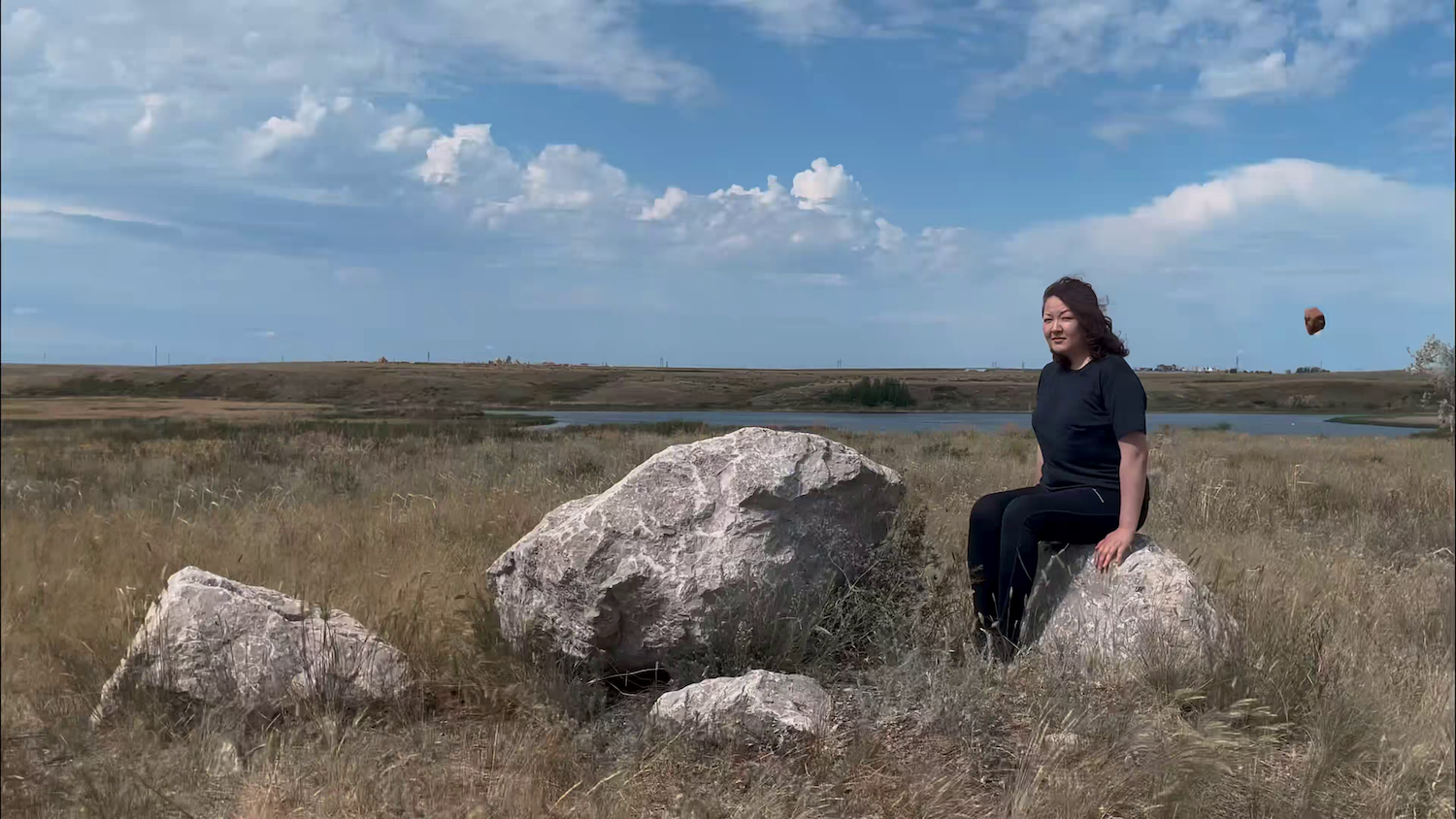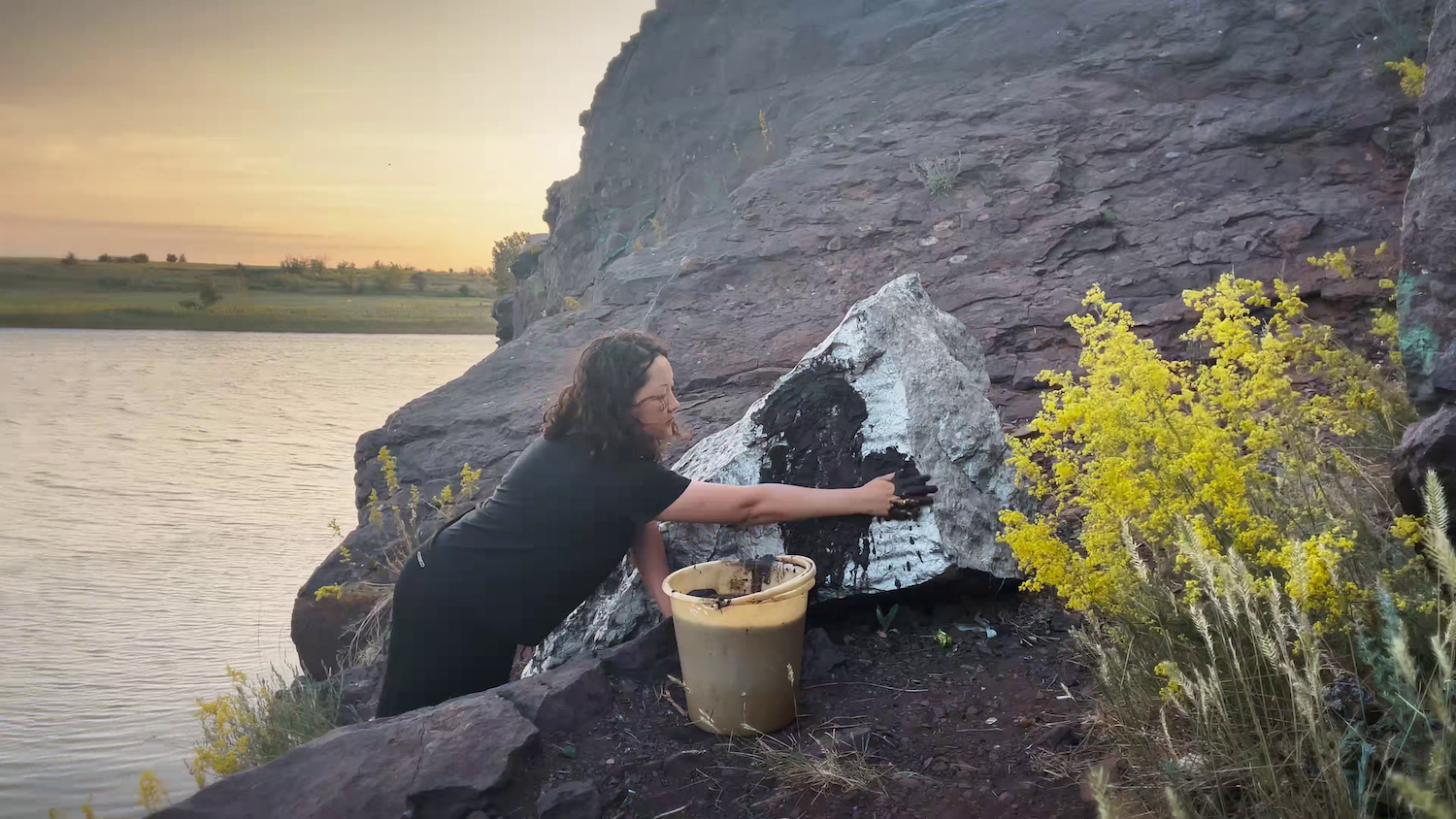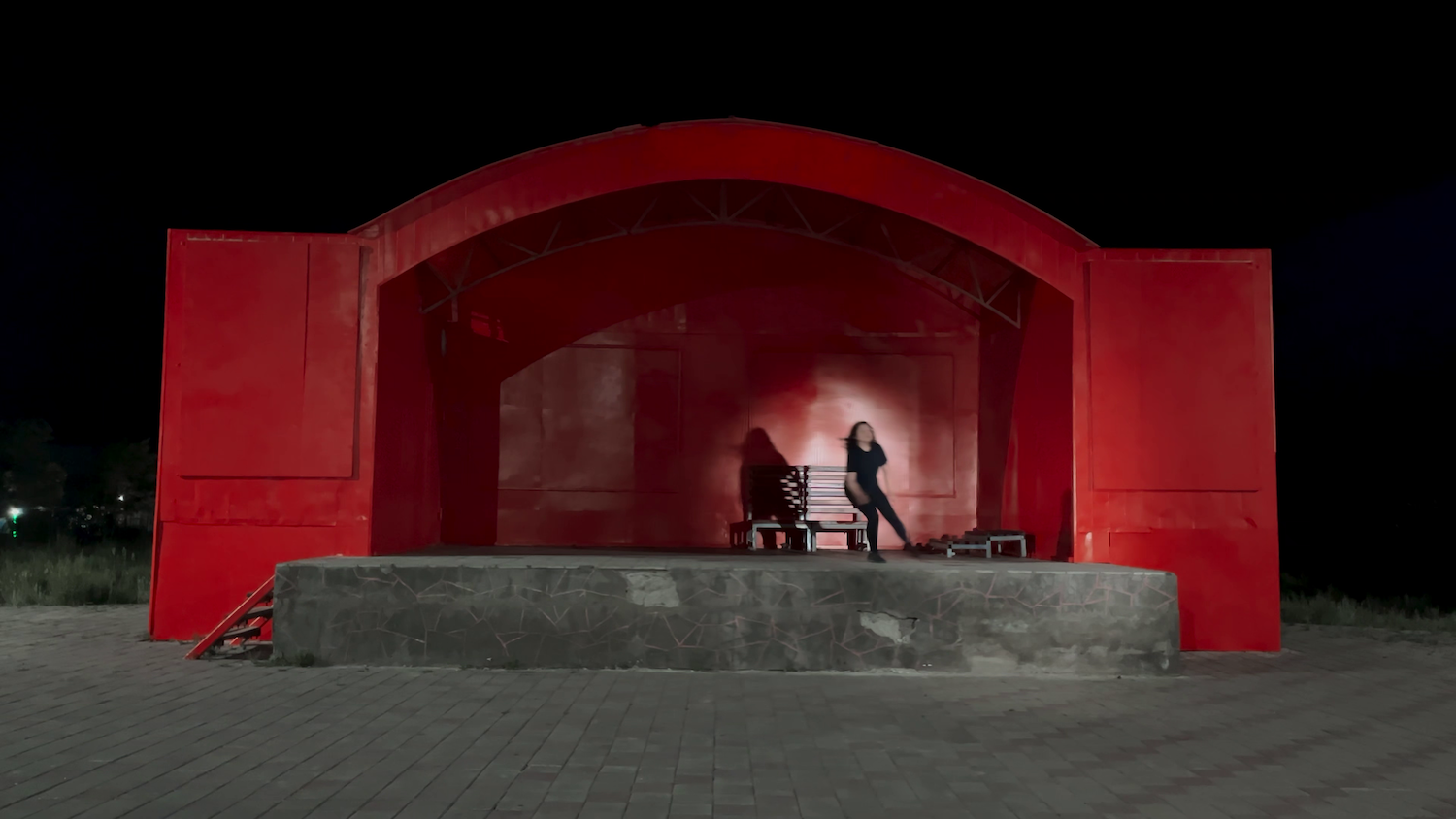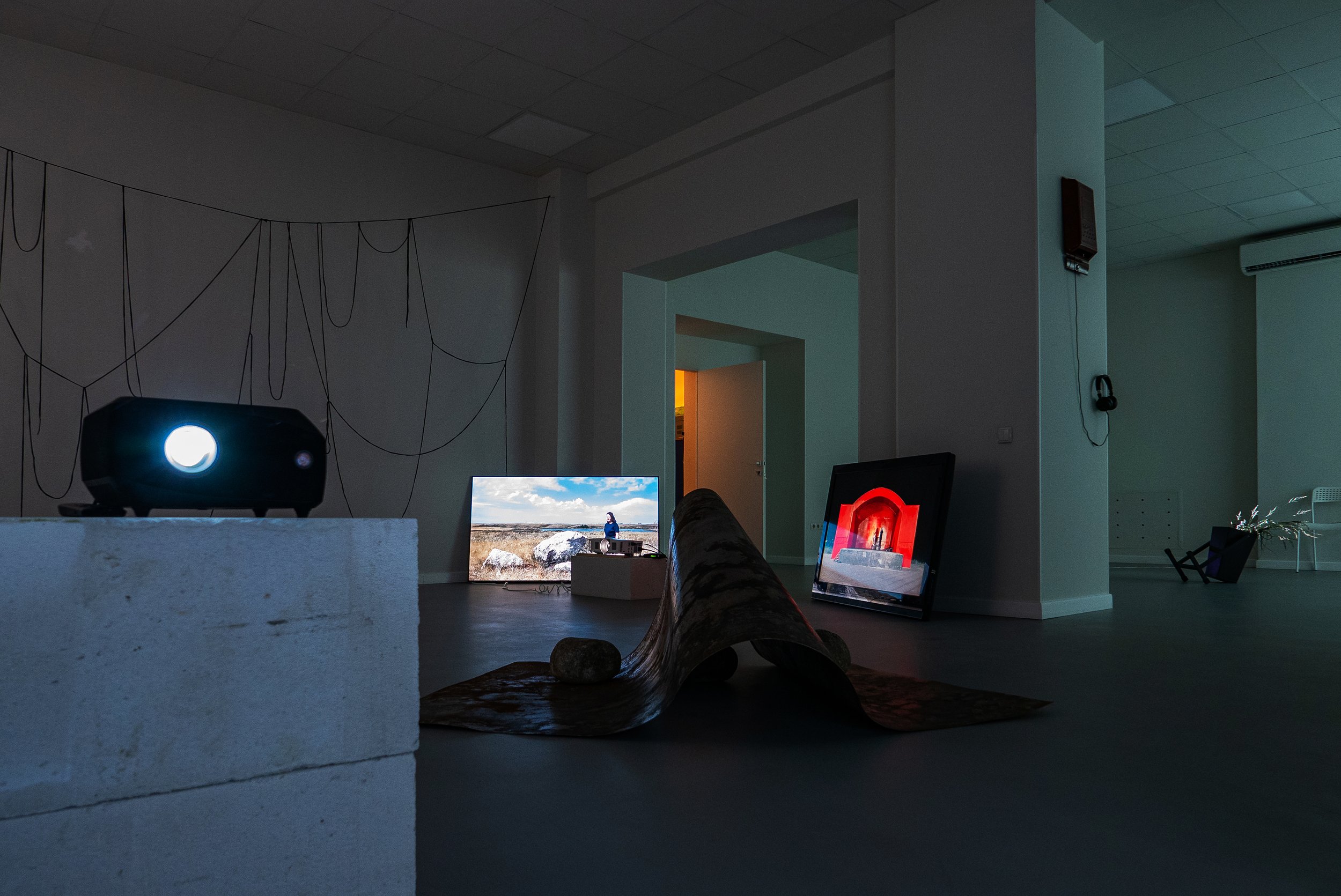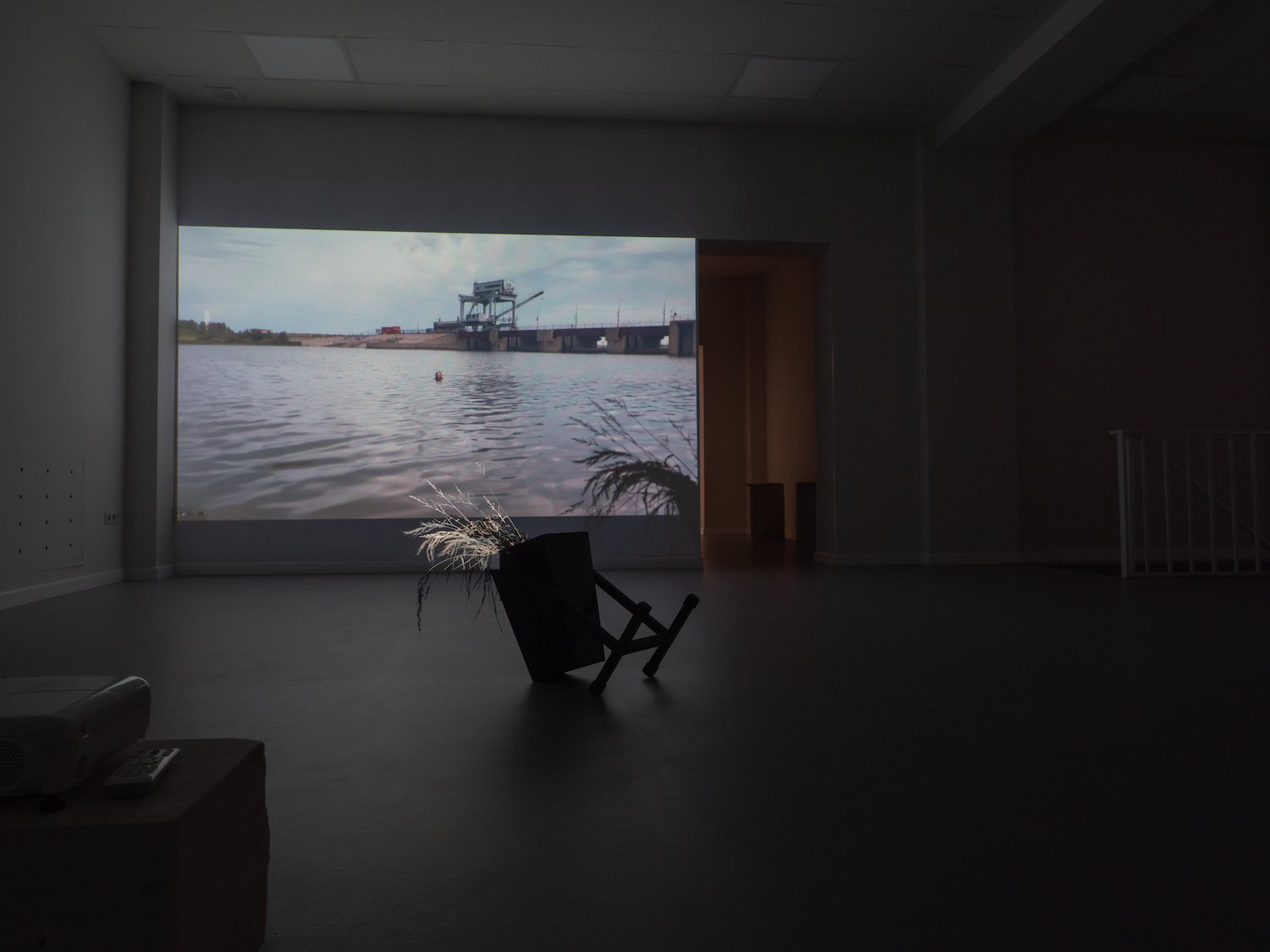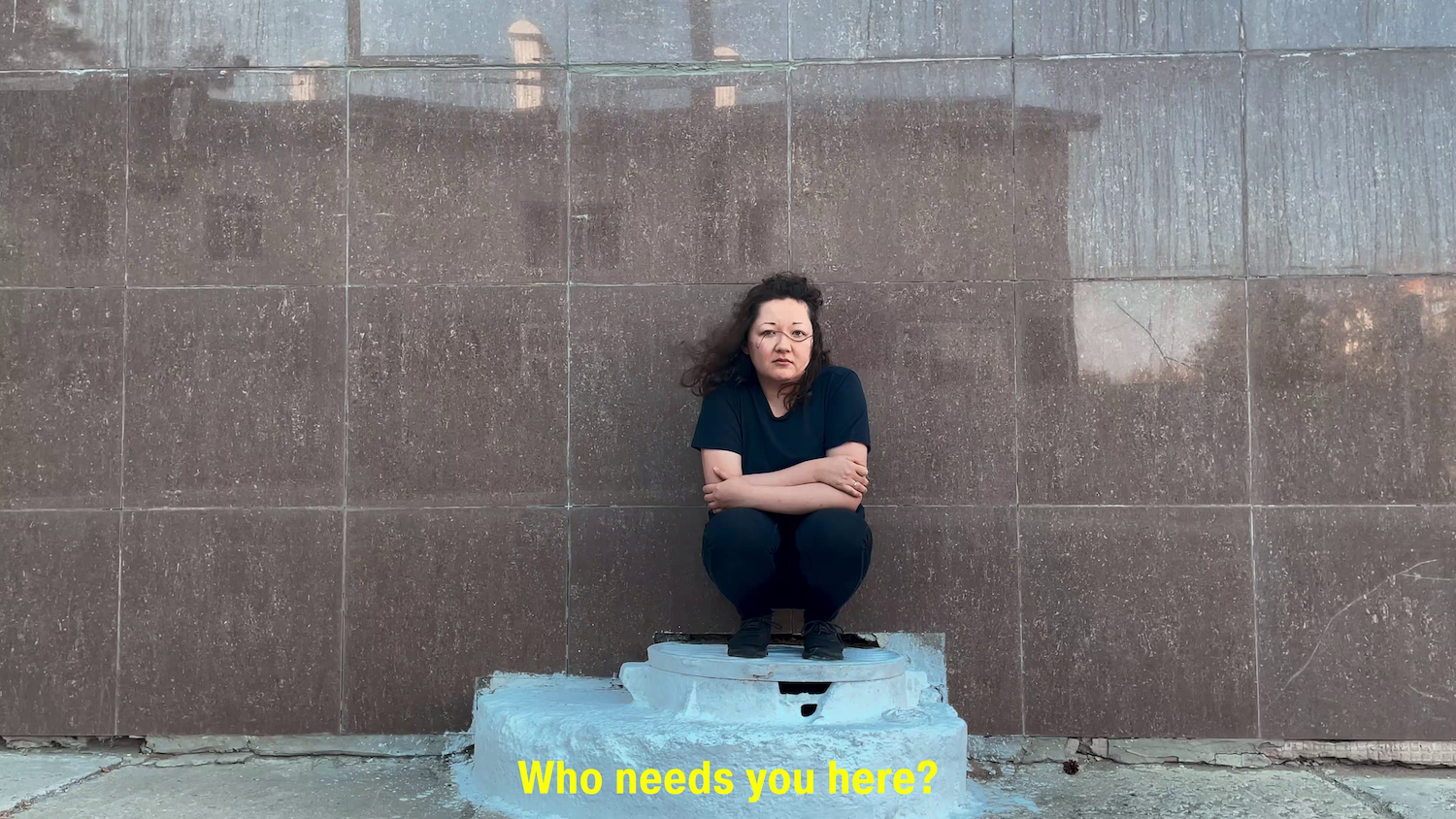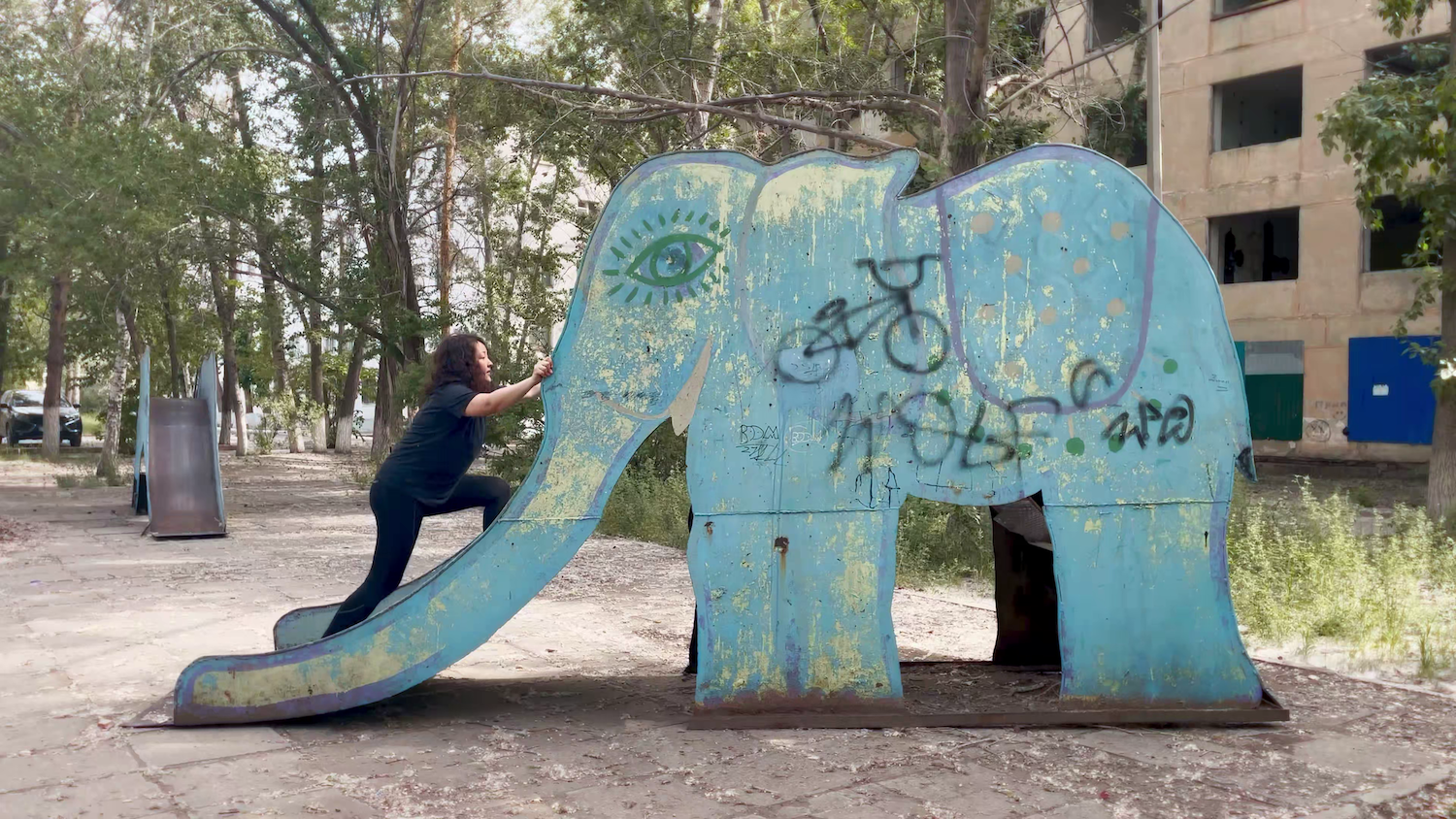Zhanar Bereketova
Dumit Estévez Raful Espejo Ovalles: We met in Almaty, Kazakhstan, through Anvar Musrepov. We came to see your solo exhibition at Egin Art Space run by Cultura.kz. Your work for this venue centered around your relationship with Lisakovsk as a result of your connection with a pen pal from this place with whom you corresponded from Moscow for years. Can you tell me how did this come to be?
Zhanar Bereketova: First of all, thank you, Nicolás, for visiting the exhibition, I very much enjoyed our talk that day. I am also honoured to be a part of the Interior Beauty Salon catalogue (I see it as a collection of thoughts and insights, hope that is ok?).
Lisakovsk is a small town in North Kazakhstan, and in a way, it has become a “magic” place for me during the past 19 years. I met Zhandos Bermukhambetov in a chat when I was 14, and we have become close friends, even online boyfriend and girlfriend for a short period of time. We have been sporadically meeting when I have been to Kazakhstan or other countries (UK, Estonia). Yet as he moved to bigger Central cities, I have never been to Lisakovsk. It is also quite far from where my relatives lived. I had sent parcels to Zhandos with various things like a copy of music albums which were hard to find at that time, and some souvenirs. I have even made videos of me showing Moscow, my school, and my friends. So, I had a strong feeling that not only I had a relationship with him, but also with the town. I knew I would visit it one day.
Last year I bought the tickets to Lisakovsk but had to cancel because of illness. This year the war pushed me to migrate to Kazakhstan for a while, so I thought I would not miss the opportunity to come there. As the circumstances changed, I decided I wanted to communicate with the town not as a tourist but as an artist. The performance felt like the perfect medium. Luckily, I told the idea of a potential exhibition to Vladislav Sludskiy, the curator at Cultura.kz, and he passionately supported it. I think it was the first time ever that I knew I would exhibit the work in a certain place before even making it.
NDEREO: How did you go from writing to your friend, Zhandos Bermukhambetov to engaging with Lisakovsk and its spaces of public use in such personal and intimate ways? Do you see the relationship with your friend and that with Lisakovsk as one, or are they distinct ones? If so, is there a meeting point where the three of you coincide?
ZB: On the one hand, when I went there, I fulfilled my teenage wish. On the other, it was crucial to me as an artist, as it was the first time I made performances on my own. I had a long-term duo project, where we have been performing for a few years, but it stopped. So, Lisakovsk felt like a connecting point between those two states. Paradoxically, this town was already filled with “memories,” whereas Almaty is still a bit emotionally empty. So, the only way I could engage with the place was, as you say, intimate. Communicating with public places was very personal as I created new ways to avoid automatisms. When we repeat the same action over and over, we get used to the routine. Swimming in even different rivers is still just swimming. So, the gestures I made were new to me and to the place. Through the discomfort of doing so, it is the only way to deeply experience the landscape and cityscape — holding your breath in the water, following the stage light, being thrown stones at, etc.
I guess I would lie if I said that Zhandos was out of the picture at all. At the same time, I was focused on my complex feelings, ambitions, and fears. I did not ask him to join me, intuitively I knew I had to come alone to meet the place myself. Fortunately, Zhandos asked his classmate to help me out as I needed an assistant and a cameraman. Timur Seidalinov turned out to be a very pleasant empathic person with a great sense of humour. Again, thanks to Timur for the support. Interestingly, the process of filming felt like I was a teenager in the summer camp. It was surreal. Funny that he remembered my parcels, so I kind of did meet an old friend, but a different one.
It is a curious question whether there is a point where I, Zhandos, and Lisakovsk meet together. Even though he came to the exhibition, the three of us definitely have not “met-met” yet. And I am not sure if this should somehow be solved. Maybe, on the contrary, it should never happen.
NDEREO: As I understood, your family is from Kazakhstan, and your home is in Moscow. In my conversations with artists in Kyrgyzstan and Kazakhstan, there is an effort to decolonize, and the politics of the former Soviet Union are seen as a colonizing, and I would say an imperial project that sought to homogenize languages, cultures and ways of being in Central Asia. How is it for you to travel between Moscow and Kazakhstan, emotionally, culturally and creatively?
ZB: I am 33, and I was born in Moscow and have lived there until last year. It is my home. I am ethnically Kazakh, and the culture did reach me, thanks to my parents, yet in a cut version. I rather identify myself as Russian with Kazakh roots. I have friends in Kyiv, and I have been there five times. I am deeply shocked by the ongoing war. I was not able to create new work for almost a year. Kazakhstan surely feels safer for me and my husband, we both have military tickets (medical background). I feel torn. My parents, my brother, and my friends are in Moscow, and it is emotionally hard. I am grateful to Kazakhstan, I am learning the language and enjoying the culture very much, yet I miss a lot.
I see the pain because of the historical context and, of course, the ongoing suppression. I think it is important to talk about that and to find constructive ways to live through it and to find solidarity with each other. The war highlighted old issues. Fortunately, there are many Kazakh (and not only, of course) researchers in academia, who initiate conversations and discuss potential tools to work with it.
NDEREO: Back to Lisakovsk, what shifts have your conversations with the places and spaces in this city may have generated for you at different levels, whether personally or spiritually, to name a few?
ZB: As I have dreamt of going there for almost twenty years, I thought it would be the gestalt closure. But I feel that the relationship and the connections have strengthened. Even though the real city is different from how I thought it would be, it is still an emotionally important space. Lisakovsk calmed me down and supported my art practice in hard times. I spent there four days, and I hardly remember when I had such a fulfilling journey.
The city was at the same time familiar yet a very new space to me. The Human mind tends to dive into polar terms — good/bad, interesting/boring, etc., whereas those are just categories that seem to fail into the bigger picture. I also do not make a big difference between the landscape and cityscape, a human and “nature,” So, because I performed there, I physically lived through what I believe in.
I enjoyed finally coming to Lisakovsk, which is not the city I communicated with, it changed, and my friend moved. It is another place. So, I felt how the “where” is actually unseparated from the “when.” Though time is hard to touch and sounds more ephemeral, it affects a lot. A day counts, an hour may change the city, even if visually everything remains still. I cannot name favorite places there. The fact that there are no friends there anymore and there is no “reason” to be attached to the city makes our relationship more precious.
NDEREO: How do you see your body in regard to the work that you do? How do you see/perceive/understand the places that you interact with at a time when many of us are discussing the personhood of rivers and lakes, for example? Can towns and city be part of these dialogues on personhood perhaps from a different perspective? I remember having conversations with Mostar, Bosnia and Herzegovina, when I lived there as part of a creative experience.
ZB: Body to me is a tool to experience time and space. Body forces to stop thinking and to engage with physicality. In a way, the body does not exist until you feel comfortable–when there is no pain or wretchedness. You feel that you breathe when it is hard to breathe. The body is material, and that unites it with other living/non-living forms. I am not a fan of hierarchies and anthropogenic views. So, to me, the stone and the human body are in equal positions.
As I engaged with Lisakovsk on an intimate level, I believe in many personhoods existing altogether at once. Those do not contradict but rather are on different soil layers. And to me, the city is a part of the bigger landscape, and division into “natural” (forests, rivers, lakes, etc) and “human” (cities) places is artificial. Referring to ideas from Eduardo Kohn's work How Forests Think: Toward an Anthropology Beyond the Human, I'm finding support for my thoughts. Kohn questions the idea that only humans can think and make choices. He suggests that even things we don't usually think of as having minds can still have their own kind of awareness. This way of thinking shows how everything is connected. It's like the way a forest seems to think in its own way, or how our bodies feel things. Just as Kohn wants us to reconsider thinking humans are the most important, my experiences in Lisakovsk fused with theory and make me want to see that everything is connected, and the line between what's made by people and what's natural isn't so clear.
NDEREO: This is my first time in Central Asia, and I am hoping to return to the area as I see the work that I did there as wanting to deepen, to be watered and tended. I was taken aback by the kindness of the people in the area, and by the energy of so many places there, including Yssyk Kul lake in Tosor, Kyrgyzstan. I was surprised to see my interest in spiritually accepted by artists in Central Asia, and by being invited to talk about it openly. Many of my discussions there revolved around healing, rituals and shamans. Now in the United States these are trendy subjects that are being monetized by the art machine. Is there anything that you would like to say about this, or add to these points?
ZB: It is pleasant to hear that your work resonated in Central Asia. Again, that proves that geography and borders are invented constructs. They do affect us, though.
You know, I think that the subjects of healing, rituals, and shamans (or other “trendy” ones nowadays) are being monetized in circulation, both by artists and by art-related businesses. Unfortunately (or is it “natural”?), many artists sell their “exoticism.” It sells well. If you look at religion, social processes, etc., there seems to be a “good” and the “bad” side of anything in mass-culture. To me, it hardly exists one without another, especially today, when there is media and the internet. So, when something new (exotic) to the Global North appears, it is being monetized at once. To be honest, I do not know whether to fight this or not, it is an individual choice. I think at some point any theme loses the hype, it is a matter of time.
NDEREO: I thank you for talking with me. I am grateful that our dear Anvar took me to see your work and to meet you!
ZB: Thank you, Nicolás, for the talk and insightful interesting questions. It was a pleasure!
All photos: Andrey Khludeyev / Courtesy of Zhanar Bereketova
Zhanar Bereketova / links : Vimeo / Instagram
About Zhanar Bereketova: Artist and graphic design lecturer. Art resident of Open Studios at the Winzavod in Moscow. Graduated from the University of Hertfordshire, with a BA (Graphic Design). Zhanar resides in Almaty since 2022. Since 2017, she has been practicing contemporary art with a focus on sculptural forms (performances, installations, objects). Zhanar embraces site-specificity, studies event as a concept and explores physicality. She has participated in international exhibitions (such as Dasha+Zhanar at INDUSTRA Gallery in Brno, Czech Republic; Unreal Bonfires at One Night Public Gallery in Ljubljana, Slovenia, among others) and festivals (such as Localize Festival in Germany, Ecoperformance Festival in Brazil, among others). Her works have also been exhibited at the Polytechnic Museum and the Moscow Museum of Modern Art (MMOMA). In 2022, she was awarded the Grand Prix in the contemporary art section of the Biennale in Gabrovo, Bulgaria, with the project Dasha+Zhanar (collaboration with Daria Pugachova).
Nicolás’s journey through Central Asia was supported by ArtEast and CEC ArtLinks. CEC ArtsLink supports transnational cultural mobility and collaboration, empowering artists and arts leaders to engage communities in dialogue and creative projects for a more equitable, compassionate and sustainable world. For more information, please visit www.cecartslink.org. Thank you as well to the Lazy Art Festival to the Foundation for Contemporary Arts for the Emergency Grant which made possible two of Nicolás’s performances in Kyrgyzstan , and to The University of Texas at Austin, Liza Matveeva, ArtEast, Susan Katz, Zhenia Stadnik, Gulnara Kasmalieva & Muratbek Djumaliev, David Hinkle, Olivia Georgia, and Ansar.
